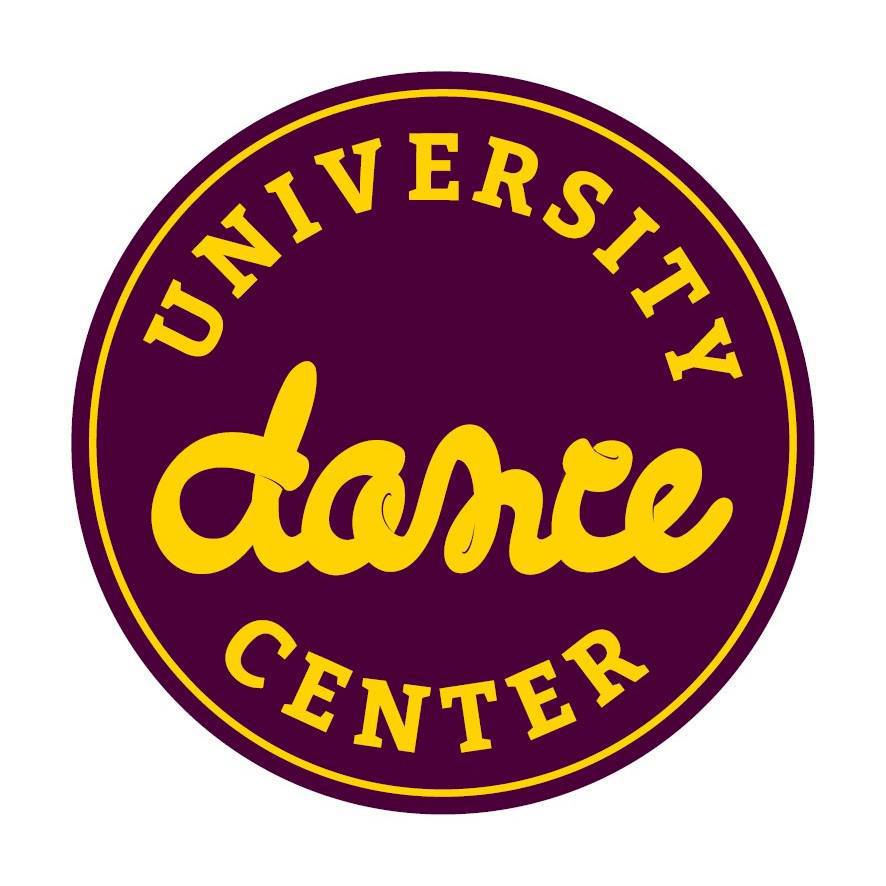In June 2025, it will be 20 years since the first edition of the Word-Formation Theories conference, which mapped the state of the art in the field in combination with the publication of Štekauer & Lieber (eds.) 2005, Handbook of Word-Formation (Dordrecht: Springer). The subsequent period witnessed a dynamic development of word-formation theories, both in breadth and depth. Therefore, the central topic of the 2025 conference will be the developments in word-formation theories. Abstracts of up to 300 words, covering any aspect of this broadly defined topic, should be sent via e-mail to pavel.stekauer@upjs.sk
Deadlines:
Submission of abstracts: Submission of abstracts extended to 15 April.
Notification of acceptance: 30 April, 2025
Registration: 31 May, 2025
Conference date: 25-28 June 2025
CALL FOR PAPERS
Abstracts of 300 words maximum should be sent via e-mail to pavel.stekauer@upjs.sk
Academic Committee:
Réka Benczes
Bożena Cetnarowska
Martin Everaert
Pius ten Hacken
Lívia Körtvélyessy
Franz Rainer
Magda Ševčíková
Pavol Štekauer
Salvador Valera
Organizing Committee:
Zuzana Buráková (P. J. Šafárik University in Košice, Slovakia)
Petra Filipová (P. J. Šafárik University in Košice, Slovakia)
Martina Martausová (P. J. Šafárik University in Košice, Slovakia)
Silvia Rosivalová Baučeková (P. J. Šafárik University in Košice, Slovakia)
Július Rozenfeld (P. J. Šafárik University in Košice, Slovakia)
Adriana Saboviková (P. J. Šafárik University in Košice, Slovakia)
Karin Sabolíková (P. J. Šafárik University in Košice, Slovakia)
Soňa Šnircová (P. J. Šafárik University in Košice, Slovakia)
Slávka Tomaščíková (P. J. Šafárik University in Košice, Slovakia)
In alphabetical order:
Mark Aronoff, Stony Brook University, USA
Antonio Fabregas, Norwegian University of Science and Technology, Norway
Gerhard van Huyssten, North-West University, South Africa
Gary Libben, Brock University, Canada
Francesca Masini, University of Bologna, Italy
Andrea Sims, Ohio State University, USA
Abstracts of 300 words maximum should be sent via e-mail to pavel.stekauer@upjs.sk. Submission of abstracts extended to 15 April.
Presentation requirements:
The Conference rooms will be equipped with computers (OS Windows) and projectors (beamers). Presenters should have their presentations on a USB or an online cloud service; connecting presenters’ computers to the projectors will not be possible.
In addition to the general session, the Conference will also include four workshops:
Methods of research into sound-symbolism
Workshop convenors: Livia Körtvélyessy (P.J. Safarik University, Kosice, Slovakia), Pius W. Akumbu (LLACAN – CNRS, Paris, France), Iraide Ibarretxe-Antunano (University of Zaragoza, Spain)
The idea of sound symbolism as “an inmost, natural similarity association between sound and meaning” (Jakobson and Waugh 2002: 182), and as “a recurrent and remarkable singularity of meaning and form correspondence” (Childs, 2014: 302) in onomatopoeia and, more broadly, in ideophones, has a long tradition. As noted by Akita (2015: 5), “the large majority of studies agree that languages involve sound symbolism, and speakers of the languages can more or less sense this”. Well-known is Humboldt’s view (1836: 79) that unlike direct imitation, in the case of sound symbolism a language “selects sounds which partly independently and partly in comparison with others produce an impression which to the ear is similar to that which the object makes upon the mind.”
While the idea underlying the term sound symbolism might seem to be simple and unambiguous, i.e., a sound or a combination of sounds, retrieved from the phonological stock of a particular language, stands for a meaning, the opposite is true. As noted by Johansson et al. (2020: 255) “[d]espite the progress made in the field of sound symbolism and iconicity… our understanding of sound symbolism and its mechanisms remains patchy.”
Given this situation, the workshop aims to focus on methods of exploration of sound-symbolic phenomena – both experimental and empirical methods – that contribute to our understanding of their role in onomatopoeia-formation and, more broadly, in ideophones. By implication, the workshop should devote special attention to the status, identification and function of phonesthemes in individual languages as well as from a cross-linguistic point of view.
Abstract submission:
Abstracts of 300 words max., devoted to these and any other related sound-symbolic questions, should be sent to Livia Körtvélyessy (livia.kortvelyessy@upjs.sk) and Pius Akumbu (pius.akumbu@cnrs.fr) by 31 March 2025. Acceptance will be notified by 15 April, 2025.
References
Akita, Kimi. 2015. “Sound symbolism.” In Handbook of Pragmatics Online, Volume 19, edited by Jan-Ola Östman and Jef Verschueren, 1–24. Amsterdam/Philadelphia: John Benjamins.
Childs, Tucker G. 1994. “African Ideophones.” In Sound Symbolism, edited by Leanne Hinton, Johanna Nichols, and John J. Ohala, 178–204. Cambridge: Cambridge University Press.
Jakobson, Roman and Linda R. Waugh. 2002. The sound shape of language. Bloomington/London: Indiana University Press.
Johansson, Niklas Erben, Andrey Anikin, Gerd Carling, and Arthur Holmer. 2020. “The typology of sound symbolism: Defining macro-concepts via their semantic and phonetic features.” Linguistic Typology 24, no. 2: 253–310.
Von Humboldt, Wilhelm. 1836. Über die Verschiedenheit des menschlichen Sprachbaues. Berlin: Königliche Akademie der Sprachwissenschaft.
Boundaries and continua in affixation: Diachronic and synchronic perspectives
Workshop convenors: Alexandra Bagasheva (Sofia, Bulgaria), Jesús Fernández Domínguez (Granada, Spain), Akiko Nagano (Shizuoka, Japan), Vincent Renner (Lyon, France)
Van Goethem (2020: 1) defines affixation as “the morphological process that consists of adding an affix (i.e., a bound morpheme) to a morphological base. It is cross-linguistically the most common process that human languages use to derive new lexemes (derivational affixation) or to adapt a word’s form to its morphosyntactic context (inflectional affixation). Suffixes (i.e., bound morphemes following the base) and prefixes (i.e., bound morphemes preceding the base) are the most common affixes, with suffixation being more frequently recorded in the world’s languages than prefixation. Minor types of affixation include circumfixation and infixation. Conversion and back-formation are related derivational processes that do not make use of affixation.”
This traditional theory-neutral definition of affixation seems exhaustive and straightforward, but it makes numerous assumptions, none of which is unproblematic. First, it assumes that the structure of words is based on morphemes, as has been the norm since the late nineteenth century and through much of the twentieth century (Aronoff 2018: 3). Second, it assumes that there are clear boundaries between word-formation processes. Third, it distinguishes between derivational and inflectional affixation, assigning different values and types of products to the two processes. Fourth, it recognizes boundedness as a definitional property of affixes as linguistic elements.
All of these assumptions have been questioned and doubts have been voiced about all of the implicated categorical distinctions. First, there are significant differences between morpheme-based (employing an item-and-arrangement approach), lexeme-based (associated with an item-and-process approach) and word-based (utilising a word-and-paradigm approach) architectures (for an overview see e.g. Stewart 2016) and between syntagmatic and paradigmatic approaches to word-formation (see e.g. Booij 2001; Booij & Lieber 2004; Štekauer 2014; van Marle 1985), which undermines the first assumption of the morpheme (including affixes) as the central element in the structure of words. Second, as Ralli (2010: 58) notes, “although different, derivation and compounding are not sharply distinguished, and […] their borderline can be permeable in both ways”, leading to disputes over the demarcation between the concepts of splinter, (bound) root, affixoid, and affix. Third, as ten Hacken (2014: 1) points out, “Whereas the core opposition between inflection and derivation is fairly obvious, the precise boundary between the two is more difficult to determine”. Fourth, and more generally, Trousdale and Traugott (2010: 1) emphasize that “gradience has been at the center of recent discussion about the synchronic architecture of grammars”.
In view of all the debatable issues and still open questions, we invite word-formationists to revisit a number of boundaries and continua in affixation, from a diachronic or synchronic perspective, through specific case studies or more theoretically oriented discussions. The list of topics includes, but is not limited to:
- derivation and inflection,
- splinters, (bound) roots, affixoids, and affixes,
- the emergence of new derivational affixes (= derivational affixization),
- affixization and other „ization“ processes (cf. Narrog & Heine 2021: 271) such as constructionalization, grammaticalization, lexicalization, and morphologization,
- evaluative and non-evaluative affixation,
- affixation and deaffixation (= back-formation),
- affixes in language contact situations.
Abstract submission:
Abstracts of no more than 300 words (plus references and figures/tables if any) should be sent to the 4 workshop organizers: a.bagasheva@uni-sofia.bg, jesusferdom@go.ugr.es, nagano.9@u-shizuoka-ken.ac.jp, and vincent.renner@univ-lyon2.fr.
Extended deadline: 15 March
Notification of acceptance: 31 March
References
Aronoff, Mark (2018). Morphology and words: A memoir. In O. Bonami, G. Boyé, G. Dal, H. Giraudo & F. Namer (Eds.), The Lexeme in Descriptive and Theoretical Morphology, 3–18. Berlin: Language Science Press.
Booij, Geert (2001). The Morphology of Dutch. Oxford: OUP.
Booij, Geert & Lieber, Rochelle (2004). On the paradigmatic nature of affixal semantics in English and Dutch. Linguistics 42(2): 327–357.
Narrog, Heiko & Heine, Bernd (2021). Grammaticalization. Oxford: OUP.
Ralli, Angela (2010). Compounding vs. derivation. In S. Scalise & I. Vogel (Eds.), Cross-Disciplinary Issues in Compounding, 57–73. Amsterdam: Benjamins.
Stewart, Thomas (2016). Contemporary Morphological Theories: A User’s Guide. Edinburgh: EUP.
Štekauer, Pavol (2014). Derivational paradigms. In R. Lieber & P. Štekauer (Eds.), The Oxford Handbook of Derivational Morphology, 354–369. Oxford: OUP.
ten Hacken, Pius (2014). Delineating derivation and inflection. In R. Lieber & P. Štekauer (Eds.), The Oxford Handbook of Derivational Morphology, 10–26. Oxford: OUP.
Traugott, Elizabeth Closs & Trousdale, Graeme (Eds.) (2010). Gradience, Gradualness and Grammaticalization. Amsterdam: Benjamins.
van Goethem, Kristel (2020). Affixation in morphology. In M. Aronoff (Ed.), Oxford Research Encyclopedia of Linguistics. https://doi.org/…4655.013.678
van Marle, Jaap (1985). On the Paradigmatic Dimension of Morphological Creativity. Dordrecht: Foris.
Latest developments in evaluative morphology
Workshop organizers: Dimitra Melissaropoulou (Aristotle University of Thessaloniki, Greece), Angeliki Efthymiou (Democritus University of Thrace, Greece)
Evaluation and its realization in grammar is a hotly debated domain in linguistic theory and has led to the publication of many important studies (e.g., that by Scalise 1984, 1988 inaugurating the field, Stump 1993, Dressler & Barbaresi 1994, Grandi 2002, Manova et al. 2023 to mention just a few). Amongst them, the Handbook of Evaluative Morphology edited by Nicola Grandi & Lívia Körtvélyessy in 2015 holds a prominent position, summarizing all major topics and theoretical advances in the field until then, shedding light on aspects that merit further investigation and analysis (e.g. Aktionsart and gradation in evaluative morphology) and providing a broad empirical coverage of the evaluative morphology in 52 under- or less-described languages representing forty-four genera and twenty-six language families. A decade after the publication of this seminal work, the question that naturally arises is where research on evaluative morphology is headed and what are the latest advances in the field.
To this end, aiming to capitalize on the latest developments in evaluative morphology, we welcome all theoretically- empirically- or methodologically based studies to evaluative morphology. Potential topics could include but are not limited to the followingː
(i) productivity and competition in evaluative morphological processes (suffixation, prefixation, compounding, reduplication, etc.),
(ii) synchrony and diachrony of evaluative morphology,
(iii) variationist and language contact aspects of evaluative morphology,
(iv) the relation of evaluation with other grammatical categories,
(v) new methods and/or approaches (acquisitional, experimental etc.) to the study of evaluative morphology,
(vi) new perspectives in the study of semantics and pragmatics of evaluation,
(vii) combinability of morphological elements and/or processes for the realization of evaluation.
Abstract submission
If you are interested in participating in this workshop, please send an anonymized abstract of max. 500 words (excluding examples and references) to dmelissa@lit.auth.gr and aefthym@eled.duth.gr. The deadline for abstract submission is March 31, 2025.
Publication:
Selected papers from the workshop will be published in a special issue of the SKASE Journal of Theoretical Linguistics.
References
Grandi, N. 2002. Morfologie in contatto. Le costruzioni valutative nelle lingue del Mediterraneo. Milano: Franco Angeli
Grandi, N. & L. Körtvélyessy eds. 2015. The Edinburgh handbook of evaluative morphology. Edinburgh: Edinburgh University Press.
Dressler, W. U. & L. M. Barbaresi. 1994. Morphopragmatics. Diminutives and intensifiers in Italian, German, and other languages. Berlin & New York: Mouton de Gruyter.
Manova, S., Grestenberger L. & K. Korecky-Kröll eds. 2023. Diminutives across languages, theoretical frameworks and linguistic domains. Berlin/Boston: De Gruyter Mouton.
Scalise, S. 1984. Generative Morphology. Dordrecht: Foris
Scalise, S. 1988. The notion of ‘head’ in Morphology. In G. Booij, G. & J. van Marle, J. (eds.) Yearbook of Morphology 1, 229–245. Dordrecht: Foris
Stump, G. 1993. How Peculiar is Evaluative Morphology? Journal of Linguistics 29: 1–36.
Compound formation with more than two lexemes
Workshop convenors: Makiko Mukai (University of Kochi, Japan), Masaharu Shimada (University of Tsukuba, Japan)
Compound formation has been one of the major topics in morphological studies in linguistics. Coffee cup is a compound consisting of two lexemes, that is, two nouns coffee and cup, and compounds of this type are usually taken up as a material to investigate the process of compounding, with their intrinsic properties revealed. In this workshop, we turn our attention to compounds consisting of more than two lexemes, which are found in languages across the world. For example, kitchen towel rack is an English compound made up from the three lexemes, kitchen, towel and rack, and can be referred to as a tri-constituent compound (Huber 2023). The aim of the workshop is to descriptively or theoretically explore properties of this kind of multi-constituent compounds, especially using comparative or experimental methods.
Tri-constituent compounds like kitchen towel rack can be two-way ambiguous (Mukai 2008, Wang and Holmberg (2021), among others). In one interpretation, kitchen towel rack has the left-branching constituent structure [[kitchen towel] rack], with rack functioning as a head of the whole compound. In the other interpretation, it has the right-branching structure [kitchen [towel rack]] and its head is the compound towel rack. This kind of tri-constituent compound thus contains a compound like kitchen towel or towel rack as a part and is often called a recursive compound. To give one of the previous studies on recursive compounds, Mukai’s (2024) aim is to clarify similarities and differences between right-branching and left-branching recursive compounds from semantic, syntactic, and phonological viewpoints by conducting empirical or experimental tests to 20 examples. She suggests that the target compounds tend to be interpreted as left-branching ones; for example, kitchen towel rack is preferably interpreted ‘a rack for kitchen towels’ rather than ‘a towel rack in a kitchen.’ Also, she observes that left-branching types in principle obey the Lexical Category Prominence Rule (Lieberman and Prince 1977), according to which one constituent is always more prominent with respect to its immediate sister constituent. Right-branching types, on the other hand, do not strictly obey it, even though there were variations among the participants for some of the compounds.
It should be noted that all of the tri-constituent compounds are not of recursive type. In fact, there is also a tri-constituent compound of coordinate type. For example, we find such a Japanese tri-constituent compound as sho-chiku-bai ‘maple-bamboo-cherry.’ In this case, unlike recursive compounds, the three constituents are combined to establish a coordinate relation, giving such an interpretation as “maple, bamboo and cherry.” Coordinate compounds have been cross-linguistically or typologically classified into several types (Olsen 2001, Bauer 2008, Arcodia 2010, Shimada 2013) and the identification of their morpho-syntactic structures has also been a topical issue (Mukai and Shimada 2021, Yonekura et al. 2023). However, a major target was a two-member coordinate compound, and there are few previous studies shedding light on a coordinate compound with more than two constituents.
Taking all the above into consideration, we would like to invite linguists to discuss several debatable issues of multi-constituent compounding. The list of topics includes, but is not limited to:
a. Comparison between right-branching and left-branching recursive compounds
b. Comparison between recursive compounds and coordinate compounds
c. Phonological, semantic, morphosyntactic or/and pragmatic properties of recursive compounds or/and coordinate compounds
d. Classification of recursive compounds or/and coordinate compounds
e. Issues on the lexical integrity
f. Typological or cross-linguistic issues on recursive compounds or/and coordinate compounds
g. Processing or acquisition issues on recursive or/and coordinate compounds
Abstract submission
Abstracts of no more than 300 words (plus references and figures/tables if any) should be sent to the 2 workshop organizers, mukai@cc.u-kochi.ac.jp, shimada.masaharu.fu@u.tsukuba.ac.jp.
Extended deadline: 21 March 2025
References
Arcodia, Giorgio F, Nichola Grandi, and Bernhard Wlchlli (2010). Coordination in compounding. Edited by S. Scalise and I. Vogel. Cross-disciplinary issues in compounding. Amsterdam: John Benjamins. pp. 177–197.
Bauer, Laurie (2008). Dvandvas. Word Structure 1: pp. 1–20.
Huber, Elizabeth (2023). Tri-constituent compounds: A usage-based account of complex nominal compounding. Berlin/Boston: De Gruyter Mouton.
Lieberman, Mark, and Sproat (1992). Stress and structures of modified noun-phrases in English. In Lexical Matters. Edited by Sag Ivan and Anna Szabolsi. Stanford: Stanford University Press, pp. 131–81.
Mukai, Makiko (2008). Recursive compounds. Word Structure 1: pp. 178–198.
Mukai, Makiko (2024). A descriptive and experimental investigation of recursive compounds in English: Their semantic, syntactic, and phonological characterization. Languages 2024, 9, 175.
Mukai, Makiko and Masaharu Shimada (2021). Reduplication and Compounding with Mimetic Roots. Language Association of Great Britain. Paper presented at the Annual General Meeting, online, September 9 2021.
Olsen, Susan (2001). Copulative compounds: a closer look at the interface between syntax and morphology. Edited by G.E. Booji and J. Marle. Yearbook of morphology 2000. Dordrecht: Springer, pp.279–320.
Shimada, Masaharu (2013). Coordinated compounds: Comparison between English and Japanese. SKASE Journal of Theoretical Linguistics 10: pp. 77–96.
Wang, Qi and Anders Holmberg (2021). Reduplication and the structure of nouns in Xining Chinese. Natural Language and Linguistic Theory 39: pp. 923–958.
Yonekura, Hiroshi, Akko Nagano, and Masaharu Shimada (2023). Eigo to nihongo ni okeru toifukugogo (Co-compounds in English and Japanese). Tokyo: Kaitakusha.
Registration fees
Registration fees:
Regular attendance: 100 EUR
PhD students: 50 EUR
Payment by bank transfer to the conference bank account:
Any fees charged by remitting banks are to be paid by the conference participants. It is the responsibility of the sender to ensure that the conference receives the full amount.
Bank details for transfers:
Beneficiary’s name: Slovenská asociácia pre štúdium angličtiny (SKASE – The Slovak Association for the Study of English)
Beneficiary’s address: Petzvalova 4, 04011 Košice, Slovakia
Bank name: Všeobecná úverová banka, a. s., Slovensko
Bank address: Hlavná 61, 080 01 Prešov, Slovensko
Account number:
IBAN: SK92 0200 0000 0017 9775 5551
SWIFT/BIC CODE: SUBASKBX
Please ensure that your transfer is identifiable by including the conference identifier (message) “WFT KOSICE 2025” and your name, e.g. “WFT KOSICE 2025 James Jameson.”
Receipts
Reception of payment will be confirmed by e-mail. Printed invoices will be issued and sent by e-mail upon request, or they can be collected at the conference venue check-in.
KOŠICE – THE METROPOLIS OF THE EAST SLOVAKIA
Košice, the second largest city in Slovakia, has always been an natural centre of business, culture and education. Košice’s earliest documents date back to 1230 and refer to it as “Villa Cassa”. Its coat of arms is the oldest in Europe, a fact attested to by a letter dating from 1369. The city’s historic sights – from various periods – are concentrated in the centre, the Urban Heritage Area. The recently reconstructed Singing Fountain offers visitors an impressive show right in the middle of Main Street.
Košice is a city with an eventful and illustrious past and multicultural and colourful present. It is a seat of culture and education. During the university semesters students make the city their own, and one may find them at every turn: in the theatres, the museums, the galleries, the concert halls, the libraries, and the parks. Almost nine thousand future professionals in medical, legal, scientific, social, philosophical disciplines and arts study at Pavol Jozef Šafárik University, further swelling the already large permanent population of the city of over 240,000.
More about Košice at www.kosice.sk
CONFERENCE VENUE
Directions to the conference venue, accommodation, and restaurants can be found in this map of Kosice.
The Conference rooms 1, and 2, the Refreshments room, Registration room, two toilets are located in the Plato building. More toilets and public computers are located in the basement of the Plato building.
INSURANCE
Please note that neither Pavol Jozef Šafárik University in Košice, nor SKASE, will pay for, or accept liability for, travel, accommodation, living or other expenses incurred by participants, unless previously agreed in writing.
All conference participants should be aware that neither Pavol Jozef Šafárik University in Košice, nor SKASE, have or will accept any liability whatsoever for any damage or injury to visitors, to the university or to property, however such damage or injury may be caused.
Participants are expected to be fully insured by their own institutions or through their personal insurance for personal health, accident/property coverage (also against claims made by third parties) during their participation in the Conference.
Welcome to the beautiful city of Košice which offers hundreds of spectacular places for you to enjoy. Even though there are plenty of other restaurants, cafés, bars and clubs in Košice, we highly recommend the following selection which we consider to be among the best. We hope you will enjoy the wide variety of places that we have chosen for you. Most are situated right in the historical centre, so you do not have to spend much time finding them.
RESTAURANTS
All of the following restaurants offer a daily menu for reasonable prices between 11.30 am and 2 pm, usually including a starter, a main course, and a dessert. We have decided to rate them for you with stars, even though it is not an official ranking.
Le Colonial, Hlavná 8, http://www.lecolonial.sk/ ****
Mon-Sun 11.00–23.00
A colonial style restaurant offering high-class delicious meals and a wide variety of drinks served by a professional staff.
Golden Royal, Vodná 8, http://www.goldenroyal.sk/ ****
Tue-Sun 11.00–21.00, Mon Closed
Situated in a charming Winter Garden with delicious international cuisine.
LaHacienda, Mäsiarska 430/8, https://lahacienda.sk/en/ ****
Mon Closed, Tue-Thu 11.00–23.00, Fri-Sat 11.00–24.00, Sun 11.00–23.00
Offers high quality Mexican food, including burritos, quesadillas, fajitas, tacos, traditional Mexican desserts and drinks. Situated in very stylish interior.
Pivovar Hostinec, Levočský dom, Hlavná 65, https://www.pivovarhostinec.sk/en/ ****
Mon-Thu 15.00–24.00, Fri 15.00–01.00, Sat 12.00–01.00, Sun 12.00–24.00
It is the oldest restaurant in Europe with a great atmosphere placed in a 15th century gothic building serving high-quality food. It is also a great place for tasting different kinds of beer.
Rosto Steakhouse, Orlia 6, http://www.rosto.sk/ ****
Mon-Fri 11.00–23.00, Sat 12.00–23.00, Sun 12.00–22.00
The only official steakhouse in Košice serves mainly delicious steaks, but also grilled fish and Oriental specialities. It also includes a charming summer garden.
Bakoš Bistro, Krivá 14, https://www.bakosbistro.sk/sk ****
Mon-Fri 9.00–16.00, Sat-Sun 9.00– 7.00
Young chef’s bistro based on high quality ingredients from local Slovak suppliers. The cuisine concentrates on traditional, healthy and light recipes with modern variants and ingredients. Suitable for breakfast, brunch as well as for lunch and dinner. Serves great coffee.
Little India, Kováčska 23, http://www.littleindiakosice.sk/ ***
Mon-Fri 10.00 – 22.00, Sat 11.00 – 22.00, Sun 12.00 – 22.00
Indian restaurant where you can try specialties prepared by our cooks accompanied with a pleasant environment. Enjoy the unique taste of Indian specialties.
Villa Regia, Dominikánske námestie 3, http://www.villaregia.sk/sk/restauracia ****
Mon-Fri 11.00–18.00, Sat 11.30–18.00, Sun Closed
One of the most popular restaurants in the city with a historical atmosphere, massive wooden tables, wooden statues, and a fire place. If you are a fan of steaks, it is the place for you.
Camelot, Kováčska 19, http://www.restaurant-camelot.sk/ ***
Mon-Fri 11.00–24.00, Sat-Sun 15.00–01.00, Sat 15:00–24.00
An outstanding restaurant inspired by the legendary Camelot castle offers great steaks, raw meat specialities and one of the best Czech beers in Košice.
Karczma Mlyn, Hlavná 82, http://www.karczmamlyn.sk/ ***
Mon-Thu 11.00–23.00, Fri 11.00–24.00, Sat 11.30–24.00, Sun 11.30– 22.00
The restaurant premises are decorated with historical rural wooden working tools and Goral paintings typical for the era. The restaurant staff will serve meals to you, offering the selection of meals made of fresh products.
Bamboo Sushi&Grill, Hlavná 78 ***
Mon-Thu 10.30–22.00, Fri 10.30–23.00, Sat 12.00–23.00, Sun 12.00–21.00
Bamboo Sushi&Grill offers specialities from Asian cuisine in a pleasant, decent and stylish interior. Besides sushi, the visitors can also taste Vietnamese and Thai cuisine.
Sushi Maiko, Hlavná 1, http://www.sushimaiko.sk/ **
Mon-Sun 11.00–22.30
A modern sushi restaurant situated in Double Tree by Hilton offers a great selection of fresh sushi also available in the form of daily menus. Gluten-free dishes are also available.
Grange, Mäsiarská 8, https://grange.farm/ ***
Mon-Fri 11.00–22.00, Sat 13.00–22.00, Sun 13.00–21.00
Perfect place to grab a burger and fries.
BRGR, Bastion Office Center, Továrenská 8, 040 01 Košice, https://brgr.sk/kosice ****
Mon-Sat 11.00–21.00, Sun 15.00–20.00
The most recently opened burger place in Košice. They also offer perfect homemade fries and coleslaw.
Peppe’s, Mäsiarska 8, http://www.peppes.sk/index.php ***
Mon-Sun 11.00–22.00
Italian restaurant offering delicious pizza and pasta with the focus on Sicilian cuisine, prepared from fresh ingredients by Sicilian chef Giuseppe.
Zvon, Zvonárska 4, https://pizzeriazvon.sk/ ***
Mon-Sat 10.00–22.00, Sun closed
Another Italian restaurant, famous especially for its pasta.
BlueBell, Bočná 6, https://www.bluebellke.sk/ ***
Stylish place offering daily menus. It is famous for its terrace with the view of Saint Elizabeth’s Cathedral where you can enjoy your coffee or beer. In the evenings they often organize concerts of young talented musicians and bands.
Vincent, Alžbetina 6, http://www.vincent-restaurant.sk/ **
Mon-Thu 10.00–23.00, Fri 10.00–1.00, Sat 11.00–24.00, Sun 12.00–23.00
This restaurant decorated by some of Vincent Van Gogh’s famous paintings is an ideal place for quick lunches offering delicious daily menus for reasonable prices.
Halmi Cafe, Hlavná 21 **
Mon-Thu 9.00–22.00, Fri 09.00–00.00, weekends 14.00–22.00.
Multigenre space and coworking café in the heart of the city.
Burekas, Vrátna 58, **
Mon-Fri 8.30–19.00, Sat Closed, Sun 12.00–19.00
A unique Jewish restaurant with a special menu including Falafel and Humus served by friendly staff. You can enjoy yourself in a beautiful garden space for low prices.
FASTFOOD
Pizza Pizzalino, Hlavná 108
Mon-Thu 11.00–2.00, Fri-Sat 11.00–4.00, Sun 15.00–24.00
A very popular place for late-night snacks for a special price of €1 for a slice of pizza.
McDonald’s, Protifašistických bojovníkov 6
Mon-Sun 7.00–24.00
Aupark Foodcourt, Námestie osloboditeľov
Mon-Sun 9.00–20.00
The second floor of Aupark shopping centre includes various types of restaurants (Chinese, Mexican, Slovak), Kebab or the popular Subway sandwiches. Surrounded by cafés, lounges and beer places.
Burrito, Hlavná 9/12
Mon-Thu 11.00–21.00, Fri 11.00–22.00, Sat 11.00–21.00, Sun Closed
Offers traditional Mexican specialities including burritos, quesadillas and chilli bowls served to go. Based on fresh and local ingredients.
Noodler, Hlavná 91/65
Mon-Sun 10.00–22.00
Perfect place for quick lunch/diner, offering various types of Asian noodles with the possibility to choose different kinds of sauces and toppings, served to go in little boxes.
Soup Culture, Hviezdoslavova 4
Mon-Fri 10.00–19.00, Sat 10.00–18.00, Sun Closed
Healthy fast food offering homemade soups, including vegan variants, served to go in edible cups.
BREAKFAST/BRUNCH
Nico Caffé, Kuzmányho 1
Mon-Fri 8.00–22.00, Sat-Sun 9.00–22.00
Offers breakfast, brunch as well as lunch and dinner menu. Great coffee and homemade baked goods.
Šálka kávy, Hviezdoslavova 2
Mon-Fri 7.00–22.00, Sat-Sun 8.00–22.00
The perfect place for healthy breakfast, freshly baked cakes, coffee, tea, homemade specialties, and egg omelets in a beautiful interior.
San Domenico, Dominikánske námestie 3
Mon-Sat 7.00–20.00, Sun 8.00–18.00
Located in the centre of the historical town, San Domenico also offers a bio-breakfast with an option of lactose-free and gluten-free specialties.
Cinnamon Dream Bakery, Poštová 2
Mon-Fri 12.00–18.30, Sat-Sun 11.00–18.00
Delicious freshly baked cinnamon rolls with various toppings including chocolate, salted caramel, nuts, Oreos and others. Served to go in little boxes.
COFFEE, TEA, ICE CREAM, HOT CHOCOLATE
Doraz Café, Dominikánske námeste 590/0
Mon-Fri 07.00–18.00, Sat-Sun 07.00–16.00
The closest coffee place to our university. Amazing coffee, cool environment, and perfect atmosphere near the city market where they offer fresh fruits, vegetables, and flowers every day.
Saint Coffee, Hlavná 41
Mon-Thu 07.00–21.30, Fri-Sat 08.00–22.00, Sun 08.00–21:30
A vibrant coffee place. It also offers snacks and cakes.
Frištik, Zvonárska 2/B
Mon closed, Tue-Fri 07.30–14.30, Sat-Sun 08.30–12.30
Tiny and stylish coffee place, they serve cakes and sandwiches.
Melody – fine roastery, Zvonárska 149/12
Mon-Wed 10.00–17.00, Thu-Fri 10.00–18.00, Sat 13.00–19.00
Perfect coffee, cakes, a little shop where you can buy chocolate and accessories for coffee making, and they also roast coffee here.
Red Velvet Cake Bar, Hlavná 40/74
Sun-Thu 10.00–22.00, Fri-Sat 10.00–23.00
A perfect place where you can have coffee and amazing cakes. During the evening it is transformed into a bar and they serve drinks.
Caffé Trieste, Uršulínska 2
Mon-Sat 7.30–19.00, Sun 8.30–19.00
High-quality coffee in a little cosy place right next to Main Street.
Coffee World – Kávy sveta, Hlavná 65
Mon-Fri 9.00–22.00, Sat, Sun 10.00–22.00
American, Brazilian, Caribbean, Chinese, Ethiopian, French, Indian/Pakistani, Italian, Mexican or Turkish are only some of the amazing coffee types this place offers. A great cafeteria offering hundreds of coffee specialties from all around the world.
Republika Východu, Hlavná 31
Mon-Thu 8.00–22.00, Fri-Sat 8.00–23.00, Sun 8.00–21.00
The first café with a theme of Eastern Slovakia where the menu and the products are listed in the dialect of Košice. Popular for its stylish interior, breakfast, crépes, sandwiches, vegetarian meals, good coffee and drinks.
Little Havana, Kováčska 13
Mon-Thu 18.00–1.00, Fri 18.00–2.00, Sat 18.00–1.00
A very stylish place to enjoy a glass of Cuban rum, whiskey, coffee or tea.
Bonbónik, Hlavná 20
Mon-Fri 10.00–22.00, Sat 10.00–21.00, Sun 14.00–20.00
A chocolaterie offering delicious Belgian chocolate in manifold variations, including chocolate candies and pancakes.
Dobrá čajovňa, Mäsiarska 42
Mon-Sat 15.00–21.00
An amazing tea house offering hundreds of tea types, dry fruit and shishas with cosy decoration and the possibility to sit on the floor on Indian cushions.
Arthur Gelato, Hlavná 21
Mon-Thu 12.00–18.00, Fri-Sat 11.00– 9.00, Sun 11.00–18.00
Voted the 3rd best ice-cream in Košice, it offers different kinds of delicious gelato.
BEER AND WINE
All of the places offer great Slovak and Czech beer and various types of high-quality wines. Most of the places also serve typical Slovak and Czech specialties to go with beer (cheese, sausages, Tartar steak, ribs) which you should definitely try!
Golem, Dominikánske námestie 15, Mon-Thu 16.00–22.00, Fri 16.00–23.00, Sat 16.00–22.00
The Beer House, Hlavná 54, Mon 14.00–24.00, Tue-Fri 14.00–2.00, Sat 16.00–2.00, Sun 16.00–24.00
Pub U Kohúta, Hrnčiarska 23, Mon-Thu 11.00–23.00, Fri 11.00–24.00, Sat 18.00–1.00
Villa Cassa Vinoteque, Pri Miklušovej väznici 2, Mon-Fri 13.00–24.00, Sat 12.00–24.00
Camelot, Kováčska 19, Mon-Thu 15.00–24.00, Fri-Sat 15.00–1.00, Sun 15.00–24.00
Pilsner Urquell Pub Aupark, Námestie Osloboditeľov 1, Sun-Wed 11.00–23.00, Thu-Sat 11.00 – 1.00
Bernard, Alžbetina 4, Sun-Thu 17.00–2.00, Fri-Sat 17.00–4.00
Irish Pub Diesel, Hlavná 49, Mon-Thu 11.00–22.00, Fri 11:00–4.00, Sat 18:00–4.00
Pivotéka & Vinotéka, Hlavná 12, Mon-Thu 10.00–23.00, Fri 10.00–24.00, Sat-Sun 26.00–23.00
CLUBS
Jazz Disco Club, Kováčska 39, Tue-Wed 21.00–3.00, Thu 21.00–4.00 Fri-Sat 21.00–4.30
Retro Cult Club, Kováčska 49, Mon 21.00–2.00, Tue-Wed 21.00–3.30, Thu-Sat 21.00–4.30
SPECIALTIES FROM SLOVAK CUISINE
“Bryndzové halušky” (Sheep cheese dumplings) is the national Slovak dish. Sheep cheese gives a unique flavour to the meal by itself, but it is even tastier with small pieces of bacon greaves and sour cream. It is usually served with a glass of sour milk called “Žinčica”.
“Kapustnica” (Cabbage soup) is a Slovak thick sauerkraut soup traditionally prepared at the end of the year for Christmas. Kapustnica can be prepared in a lot of ways (ingredients, length of cooking, etc.) and it differs from region to region. In some regions, Kapustnica may contain smoked meat, sausages and mushrooms, in some regions it is a much simpler soup.
Fried Cheese with French Fries is a very popular Slovak/Czech dish mostly served with French fries and Tartar sauce (Tatárska omáčka) and salad.
“Lángoš” (Deep fried dough) is originally a Hungarian food but it is also a favourite take-away in Slovakia. Sometimes you’ll find it in restaurants as a starter. It is usually served with garlic, cheese, sour cream or ketchup on top (you can choose whatever ingredients you like).
“Prívarok” (Prívarok) is a typical Slovak dish, similar to soups in its consistency but much denser. It comes in many variations depending on the ingredients – pumpkins, lentils, beans, potatoes, dill, etc. It is usually consumed with a slice of bread and sausages or fried eggs might be added on top.
GETTING AROUND KOSICE
From Budapest Airport to Kosice
There are several taxi services from Budapest airport to Kosice. All of them have to be booked in advance.
CassoviaExpress (van)
Izijet (van, private car)
FlixBus (coach)
AirTrans (private car)
From the airport to the city centre
To reach the city centre from the airport, you can either call a taxi (see the taxi numbers listed below) or take the Bus 23 which leaves from the bus stop situated directly in front of the Arrivals hall. The journey time is 15 minutes, the tickets can be purchased at the ticket machines at the bus stop. Every ticket must be stamped by a machine as soon as you enter the tram or bus. You can also purchase a ticket via text message (send a blank text message to the number 1166). See below for the detailed information:
Ticket Machines
30 minutes 1.00€
60 minutes 1.20€
oversized luggage 1.00€ (you have to buy one extra ticket for 30 minutes)
SMS ticket
Send a blank SMS to the number 1166. Only a 60-minute ticket is available (1.50€).
Your destination stop should be the Liberation Square stop – “NÁMESTIE OSLOBODITEĽOV”. The AUPARK shopping centre will be in front of you. To get to Main Street – “HLAVNÁ ULICA” – cross the road in front of you and continue straight ahead, passing the DoubleTree by Hilton Hotel, which is the first building on “HLAVNÁ ULICA”. The Cathedral is about a 3-minute walk from the hotel. The schedules of Bus 23 are reproduced below, and they can also be checked at https://imhd.sk/ke/public-transport. Additionally, it is possible to download the app “Cestovné poriadky CP”, tap on the drop-down menu and pick MHD Košice, which will allow you to navigate Košice public transport in real time and based on your location. The links are also provided below.
https://apps.apple.com/sk/app/cestovn%C3%A9-poriadky-cp/id1054934213
https://play.google.com/store/apps/details?id=cz.chaps.cpsk&hl=sk&gl=US
From the railway or bus station to the city centre
While there is a taxi rank in front of the railway and bus stations, walking to the centre is really quite quick and easy. The historical centre, with the majority of hotels, restaurants, stores and the enchanting Main Street – “HLAVNÁ ULICA” – is only a 7 to 9-minute walk from the railway and bus stations. If arriving by train, go out of the right-most doors of the station and walk straight along the pavement in front you. If arriving by bus, walk along the front of the railway station (which will be on your right as you exit the bus terminal) to the second set of doors and turn left to walk along the pavement. As you walk, you will pass a tram stop (on your left). Continuing straight on, you will cross the road (cars don’t always stop for pedestrians at pedestrian crossings, so please be careful!) to walk down an alley of trees through the city park. You should already be able to see the cathedral tower in the distance. Once you have crossed a pedestrian bridge, you will enter Mlynská Street – “MLYNSKÁ ULICA”. As you continue straight on, you will exit Mlynská Street at the Cathedral, which is actually in the middle of Main Street – “HLAVNÁ ULICA“.
Once you have reached “HLAVNÁ ULICA“, if you turn right, you should reach the Peace Marathon Square – “NÁMESTIE MARATÓNU MIERU” – in less than 5 minutes; if you turn left, you should reach the Liberation Square – “NÁMESTIE OSLOBODITEĽOV” – in the same amount of time.
The Peace Marathon Square – “NÁMESTIE MARATÓNU MIERU is easily recognisable by a clearly visible statue of a marathon runner on the left hand side as well as by two large buildings of the East Slovak Museum (yellow and cream respectively) located on the left and right sides of the square. The Liberation Square – “NÁMESTIE OSLOBODITEĽOV” – can be recognised by a large memorial to the soldiers of World War II and the shopping centre AUPARK.
TO THE CONFERENCE VENUE:
We recommend you walk to the conference venue from your hotels, unless the weather is really bad. It takes much less time to walk than to take public transport. **All hotels are within walking distance from the conference venue.**
From the city centre to the conference venue
Once you have reached the Cathedral, continue walking straight on, crossing the plaza beside the Cathedral, which will be on your left. Continuing to Alžbetina Street – “ALŽBETINA ULICA” – which faces the front of the Cathedral, proceed down the street, passing the Julius Jakoby statue, until you reach the first set of traffic lights, which will be at the intersection of Alžbetina Street – “ALŽBETINA ULICA” – and Moyzesova Street – “MOYZESOVA ULICA”. Continuing along the road across the street, you will find the conference venue on your right.
From the railway/bus station to the conference venue
Take the bus 17 leaving from the bus park directly in front of the railway station park and get off the bus at the Museum of Victims of Communism bus stop – “MÚZEUM OBETÍ KOMUNIZMU” – the journey should take approximately 8 min. After leaving the bus, continue in the same direction from which you just came. Proceed down Moyzesova Street – “MOYZESOVA ULICA” – towards a small intersection in the distance (about 400 metres). The conference venue will be on your right.
From the Peace Marathon Square – “NÁMESTIE MARATÓNU MIERU” – to the conference venue
Take the bus 36 leaving from the side of the cream building of the East Slovak Museum (bus stop MARATHON SQUARE) and continue for 2 bus stops. Get off the bus at the bus stop “MÚZEUM OBETÍ KOMUNIZMU”. Proceed down Moyzesova Street – “MOYZESOVA ULICA” – towards a small intersection in the distance (about 400 metres). The conference venue will be on your right.
From Liberation Square – “NÁMESTIE OSLOBODITEĽOV” to the conference venue
Take the bus 16 leaving from a bus stop located in front of the shopping center Dargov (next to DoubleTree by Hilton Hotel) and continue for 1 stop (“DOM UMENIA” – House of Arts). Get off at the stop “DOM UMENIA” – House of Arts. Continue straight along Moyzesova Street – “MOYZESOVA ULICA” for 3 minutes and the conference venue will be on your left.
Directions to the conference venue, accommodation, and restaurants can be found on this map:
TO THE HOTELS
From the train and bus station to Pension Hradbová (20 min.):
Take Bus 17 and continue for 5 stops (12 min.). Get off the bus at Museum of Victims of COmmunism – “MÚZEUM OBETÍ KOMUNIZMU”. Turn left and cross the road at the traffic lights. Continue straight along Poštová Street – “POŠTOVÁ ULICA”. At the first crossroads, turn right, entering Hradbová Street – “HRADBOVÁ ULICA”. Continue along “HRADBOVÁ ULICA” for less than 100 metres. The Pension will be on your left.
From the train and bus station to the TUKE University Guesthouse at Boženy Nemcovej Street (30 min.):
From the train/bus station – “STANIČNÉ NÁMESTIE” – take bus 19 and get off at the “AMFITEÁTER”. Then, take bus 12 at the “AMFITEÁTER” stop and get off at Botanical Gardens – “BOTANICKÁ ZÁHRADA”. Proceed down Boženy Nemcovej Street – “ULICA BOŽENY NEMCOVEJ” – for about 400 metres. The Guest House will be on your left.
From the train and bus station to Hotel Teledom (10 min.):
From the train/bus station – “STANIČNÉ NÁMESTIE” – take bus 15, continue for 2 bus stops and get off the bus at the “DOM UMENIA”. Then continue straight along Moyzesova Street – “MOYZESOVA ULICA” for about 2 minutes to Timonova Street – “TIMONOVA ULICA” and the Hotel Teledom will be right in front of you.
From the conference venue to the TUKE University Guesthouse at Boženy Nemcovej Street (10–15 min.):
After leaving the conference venue in Moyzesova Street – “MOYZESOVA ULICA” continue to Šrobárova Street – “ŠROBÁROVA STREET”, then turn left and continue towards an intersection. Cross the street, turn left and find the “ALŽBETINA, REKTORÁT UPJŠ” bus stop. Take bus 12 and continue for 8 stops (8 min). Get off the bus at the Botanical Gardens – “BOTANICKÁ ZÁHRADA”. Proceed down Boženy Nemcovej Street – “ULICA BOŽENY NEMCOVEJ” – for about 400 metres. The Guest House will be on your left.
From the city centre to the TUKE University Guesthouse at Boženy Nemcovej Street (10–15 min.):
Once in the city centre, walk towards the Cathedral until you reach its entrance. Continue to Alžbetina Street – “ALŽBETINA ULICA”, which faces the entrance to the Cathedral, and proceed down the street until you reach the first traffic signal. Do not cross the road, turn right and find the bus stop “ALŽBETINA, REKTORÁT UPJŠ”. Take bus 12, continue for 8 stops (8 min). Get off the bus at the Botanical Gardens – “BOTANICKÁ ZÁHRADA”. Proceed down Boženy Nemcovej Street – “ULICA BOŽENY NEMCOVEJ” – for about 400 metres. The Guest House will be on your left.
Public Transport Fares
Note that public transport tickets (valid for all buses, trams) can be purchased from ticket machines (change/coins required, some take cards) and from various magazine kiosks. The cost is 1.00€ per 30-minute ride (transfers allowed) or 1.20€ for 60-minute ride. A 24-hour ticket is available for 3.80€ and a 7-day pass for 12.00€. Every ticket must be stamped by a machine as soon as you enter the tram or bus. Beware of pickpockets when on buses and at the bus stops near the Double Tree by Hilton Hotel, as they are very frequent downtown.
For more information about fares see https://imhd.sk/ke/doc/en/23095/23095
A 60-minute ride can also be paid for by sending a blank text message to 1166 (only Slovak mobile phone providers), and the ticket has to be confirmed by a return message before getting on.
BOLT Electric Scooters
A large number of electric scooters is provided at strategic spots throughout Košice, usually near larger transport hubs. A scooter can be located through GPS and rented by scanning the QR code through the company’s app which can be downloaded via Google Play or Apple App Store. Link for the download can be found here: https://bolt.eu/sk/scooters/ Aside from scooters Bolt also provides their own taxi service and food delivery. All the information can be found here: https://bolt.eu/sk/cities/kosice/. When you finish your ride, you will be asked to take a photograph of the scooter and after a short delay, your fare will be subtracted from your credit card.
ANTIK Smart-Way Bicycles
Antik company provides multiple options regarding inner-city mobility. Those include electric scooters and both regular and electric bicycles that can be rented similarly to the Bolt scooters. To rent a bike, one needs to download their app which can be found here:
• App Store = https://apps.apple.com/sk/app/antik-smartway/id1436857710
• Google Play = https://play.google.com/store/apps/details?id=antik.sk.smartcity
Minimum fare that has to be paid to rent these bikes is 1 euro/hour. Just as Bolt scooters, Antik bikes can be located through the app. Please note that you have to park the bikes and scooters in a way that does not obstruct any roads and sidewalks.
TAXI
For transport within the city, you can also call a taxi at any of the following numbers:
Student taxi +421 949 07 07 07
Easy taxi +421 919 333 333, +421 907 234 263
My Taxi +421 910 340 770
CTC taxi +421 905 955 955 (from airport), +421 556 333 333 (around the city)
Košice Taxi 24 +421 940 242 717
Central taxi +421 948 362 111, +421 911 673 673
VIP taxi +421 907 556 677, +421 55 16500
Hello taxi +421 911 434 343
Maxi taxi +421 949 000 049
Additionally, you can also use the Bolt app, as their services are available in Košice as well.
Taxi fares around the city range from €3 to €8.
All the taxi services available in Košice are listed at www.najditaxi.sk












